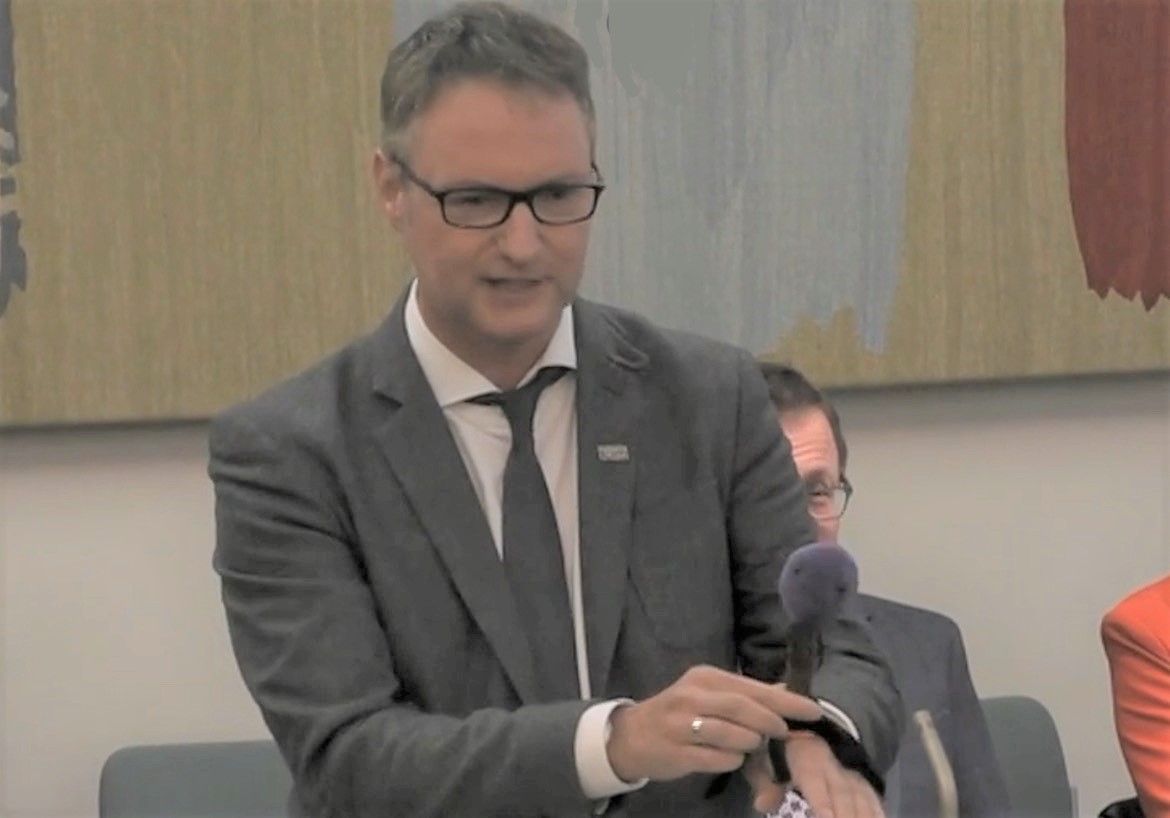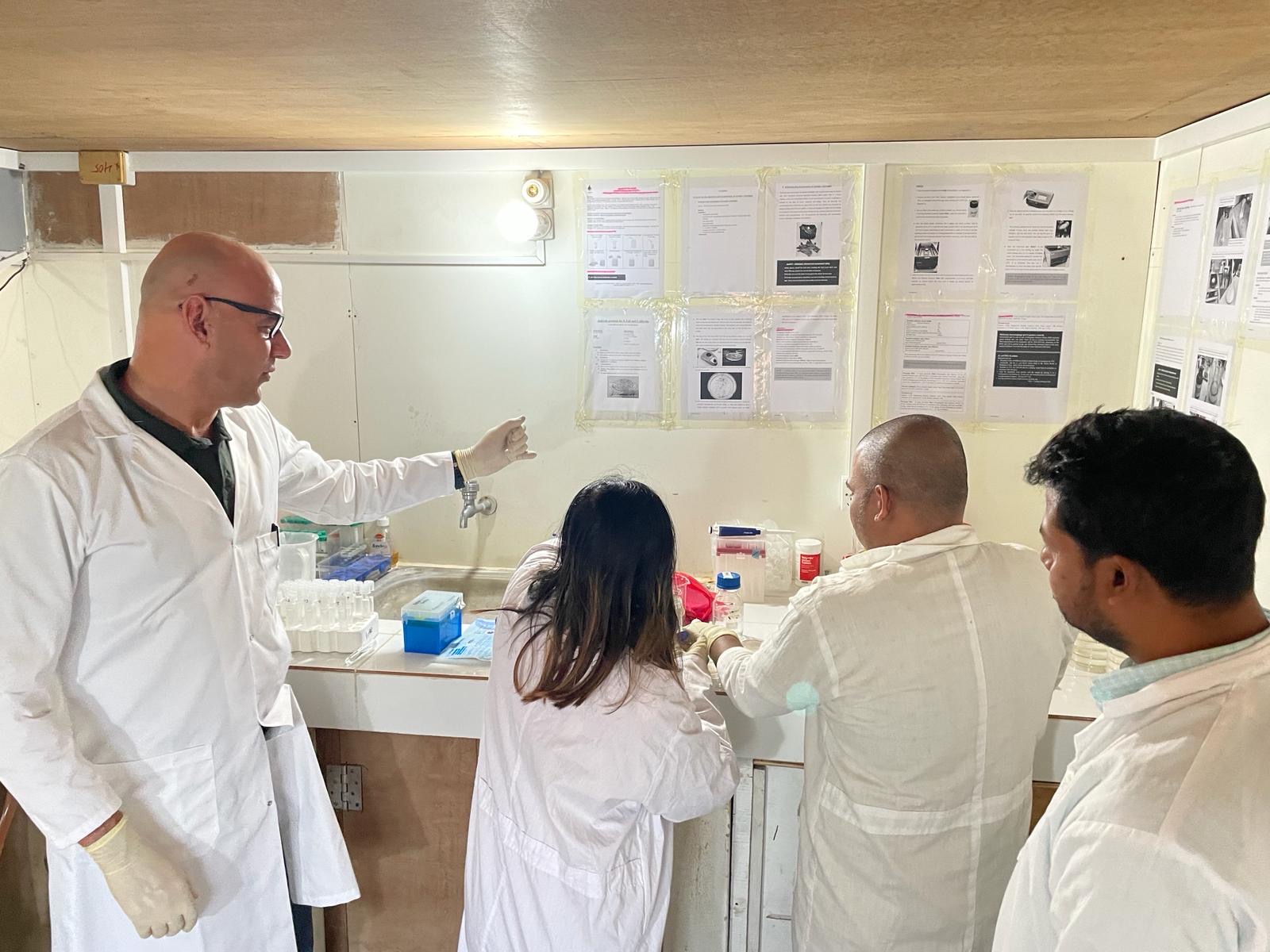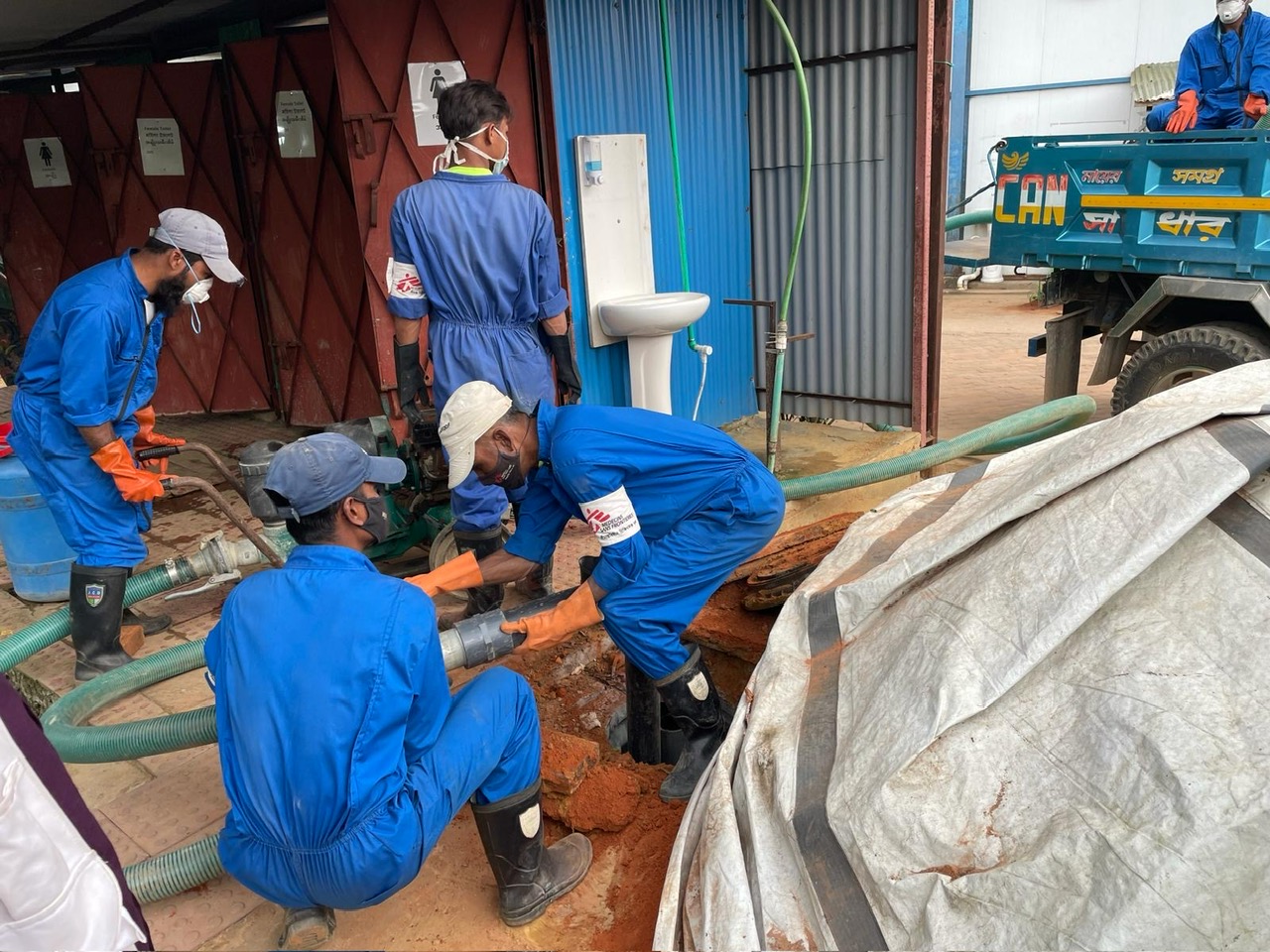BLOG | Bluephage
“Understanding the origin of water contamination is important for understanding the potential risk to human health”

Bluephage interviews James Ebdon, an environmental microbiologist specializing in developing and applying low-cost techniques to identify sources of fecal contamination in water. The conversation aims to explore his research and the SMaRT project, focused on improving water and sanitation in resource-limited areas.
Can you give us an overview of your career path and how you first became interested in the field of environmental microbiology, with a specific focus on water safety?
The path I took to becoming an environmental microbiologist was an unconventional one, given that I started my working life as an environmental engineer. However, it soon became apparent that I was far more interested in the bugs found in wastewater than I was in designing wastewater treatment facilities. So, following my master’s degree at Brunel University (London), I undertook a PhD at the University of Brighton, where my research focused on the behavior of microorganisms (bacteria and viruses) in natural and engineered environments, including those found in low-income settings.
With 20 years of experience, what pivotal moments or projects have shaped your experience in developing low-cost methods for contamination detection?
As an early career researcher, I was fortunate to be employed on an EU Framework-funded collaboration between scientists in Spain, France, Sweden, Cyprus, and the UK. The project ‘Tracking the Origin of Faecal Pollution in Surface Waters’ (TOFPSW) focussed on the development and comparison of methods for distinguishing human from non-human sources of faecal contamination (and included bacteriophages). Soon after, I got an opportunity to undertake a large-scale investigation into groundwater pollution across rural Malawi for UNICEF. The findings resulted in the launch of a government-led National Water Safety Strategy and resulted in over 180,000 people receiving improved drinking water, through the redesign and siting of 300 new shallow wells. This project was pivotal in that it showed me the potential power of low-cost pollution monitoring tools for tackling pressing global water, sanitation, and health challenges.
Can you provide an overview of your research group’s focus on microbial water quality and the development of novel bacteriophage-based MST approaches?
My initial research focused on the detection of antibiotic-resistant bacteria from known human and animal sources and helped guide international thinking on the geographical instability of resistance patterns across Europe. Doubts about the suitability of the approach for microbial source tracking (MST) led me to refocus my group’s research efforts on the development of alternative approaches involving the identification of novel human-specific phages. This led to collaboration with four water companies, three international environmental agencies, and researchers in Europe, Asia, and South and North America. To date, we have used phage to (i) identify and track human pollution inputs in rivers, groundwaters, and sediments UK and Cyprus, (ii) to establish removal efficacy of wastewater treatment and reuse technologies (e.g. activated sludge, UV processes and Membrane bio-reactors), (iii) to predict the occurrence of enteric viruses (e.g. Norovirus) in shellfish (iv) to identify typhoid transmission pathways in Indian Slums and (v) to cast light on biological ‘dark matter’ present within the human gut microbiome. This exploration is allowing us to not only identify potential MST targets, but is also improving understanding of the role bacteriophages play in human health (e.g. the encoding of antibiotic resistance genes.

James Edbon presenting on bacteriophages to the UK Science, Innovation and Technology Committee
In your article “Tracking sources of contamination in water: the age of phage”, you mentioned the emergence of microbial source tracking (MST) in the last 25 years. Your goal is to develop a ‘toolbox’ of phage-based markers. Can you elaborate on how this toolbox would contribute to identifying pollution sources from human, agricultural, and wildlife origins?
Understanding the origin of contamination is important as it (i) allows us to understand the potential risk to human health by identifying the co-presence of human pathogens; (ii) can help identify drivers of biodiversity and habitat loss, such as nitrate inputs responsible for harmful algal blooms; (iii) allows us to target environmental mitigation measures and assess their efficacy (e.g. restricting livestock access to watercourses) and (iv) allows responsibility and liability for specific catchment mitigation measures to be established. However, with many surface and groundwaters coming under ever-greater pressure from increased abstraction, climate-driven changes to rainfall distribution, more frequent and intense run-off, it is more important than ever to be able to separate the cocktail of contaminants by source. As well as providing early warning of emerging issues (and contaminants) monitoring wastewater and river waters using a ‘toolbox’ of phage markers allows us to identify, separate and prioritize pollution inputs according to those we can realistically control (e.g. wastewater inputs and agricultural run-off) from those that are less-easy to limit and control (e.g. pollution from wild birds).

Dr Diogo Da Silva from a recent lab-capacity training at Cox’s Bazar, Bangladesh
The article mentions various applications of phage-based tools, from identifying contamination in drinking water to understanding pollution drivers. Could you share a specific success story or a notable application that highlights the impact of your research?
In 2017, I was invited to join SaniPath Typhoid, a project funded by the Bill & Melinda Gates Foundation and based at the National Institute of Cholera and Enteric Diseases (NICED), Kolkata, India. The project, led by the Center for Global Safe Water, Sanitation and Hygiene at Emory University (Atlanta, US), sought to understand how typhoid was being spread among humans living in densely populated urban slums and to identify which interventions may be most effective at protecting human health. The environmental detection of S. typhi and S. Paratyphi, responsible for typhoid, is costly and complex, and so we were invited to deploy human-specific phages to help identify high-risk human faecal contamination pathways. We were able to do this by initially testing pooled sewage from shared community toilets and pumping stations for the presence of phages capable infecting Bacteroides fragilis strain (GB-124). Once we were able to show that these phages were human-specific, we could subsequently use them to identify human faecal exposure pathways (e.g. municipal drinking waters, stored household water, ponds, open drains, flood waters, soil from communal areas, swabs from shared community toilets, raw fresh produce and street food consumed by children and adults. The findings showed high levels of faecal contamination in soil where children played and that human faecal contamination was present in fresh produce and street food, and therefore that water, sanitation and hygiene interventions should be focused on these particular pathways.
Your research extends to low-income and emergency settings globally. How do phage-based methods contribute to contamination prevention in areas like cholera treatment centers and refugee camps? We are currently using phages (Somatic Coliphages and phages infecting non-pathogenic Vibrio spp.)
We are currently using phage in a project collaboration with MSF (Médecins Sans Frontières) and BRAC (Building Resilience Across Communities) at the Rohingya Camp, Cox’s Bazar, currently home to nearly 1 million displaced people. Project SMaRT seeks to optimise the deployment of lime treatment as a potential backstop with which to safely deal with rapid increases in human waste during humanitarian crises and to prevent infectious disease outbreaks at healthcare centres. The project, focuses on two Faecal Sludge Treatment Plants (FSTPs) processing waste from communal latrines and clinical settings and phages are helping us to establish the sanitary quality of treated and untreated waste and to optimise treatment efficacy in the the field. The project is supported by ELRHA, a global organisation that finds solutions to complex humanitarian problems through research and innovation.

MSF team emptying septic tanks in Cox’s Bazar camp, Bangladesh.
In your article, you mentioned the exciting ‘age of phage.’ How do you foresee the continued evolution of phage research impacting environmental and public health in the future?
Given that phages are the most abundant biological entities on Earth, we still know relatively little about their diversity and the range of functions this ‘biological dark matter’ plays both within the human body and within the wider environment. With antimicrobial resistance reducing the efficacy of many conventional antibiotic agents, phages are finally gaining wider recognition in terms of their therapeutic potential. Therefore, given the likely increased focus on phage-host interactions in the coming years, combined with the availability of ever cheaper and more powerful molecular approaches and bioinformatic pipelines, it is highly likely that new targets/ phage-based diagnostics tools will emerge, which could further enhance protection of human and environmental health. That said, I also still see a role for culture-based methods, particularly if methods can be further optimized in terms of their sensitivity, speed and suitability for deployment in low-income, or emergency settings.

